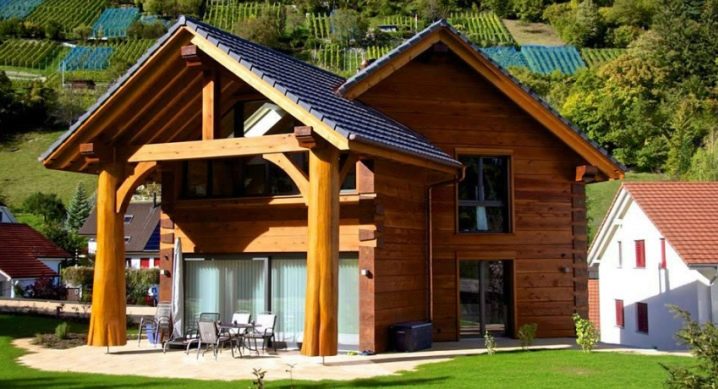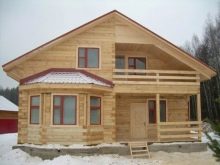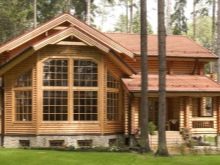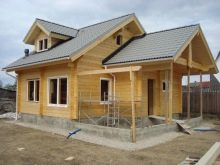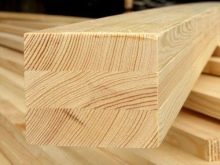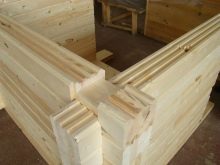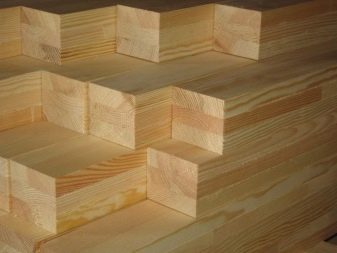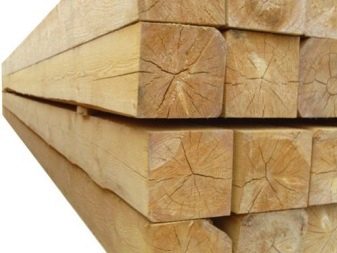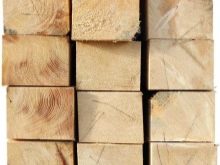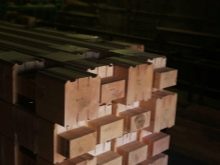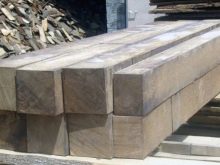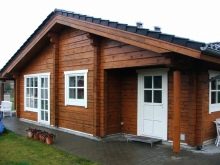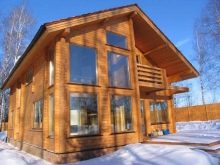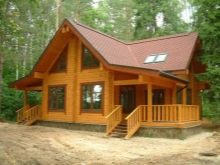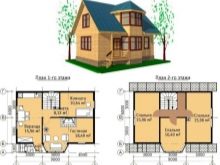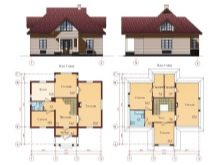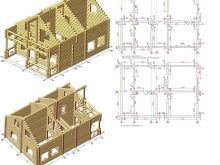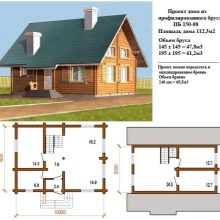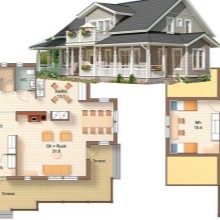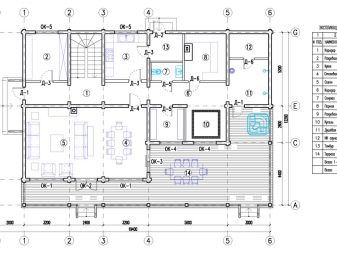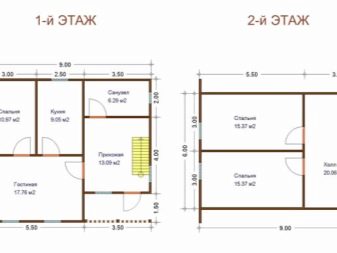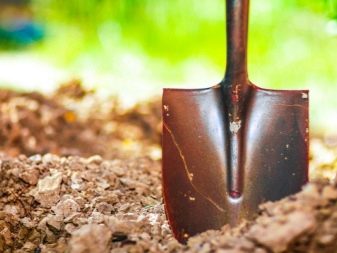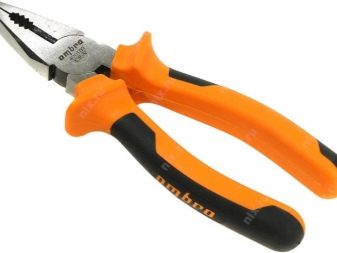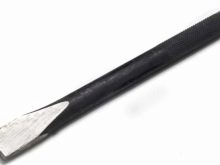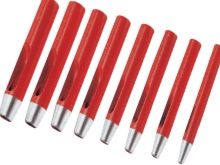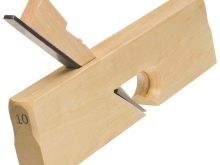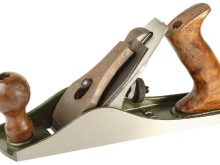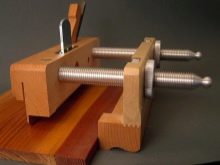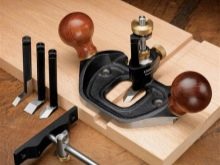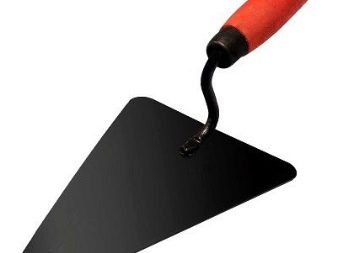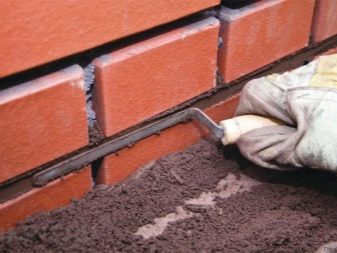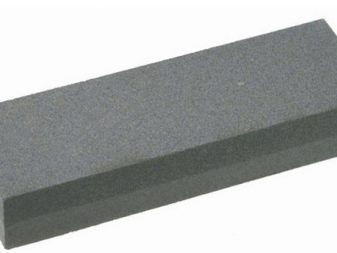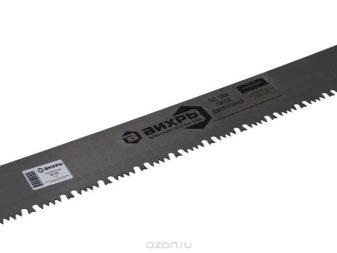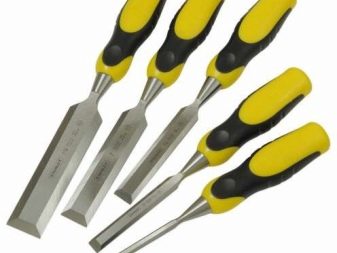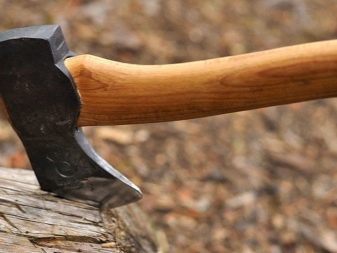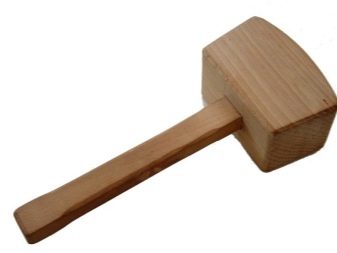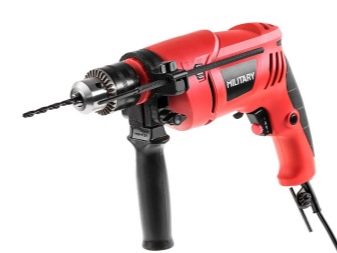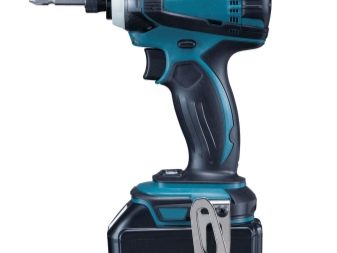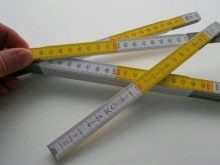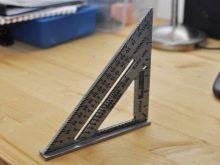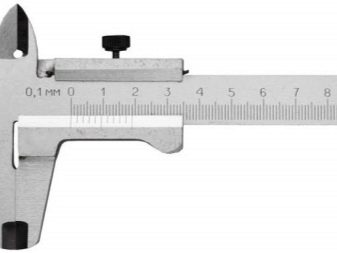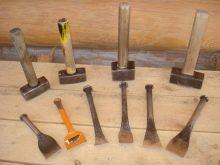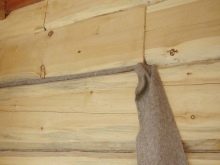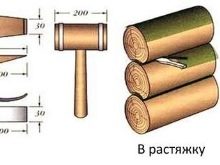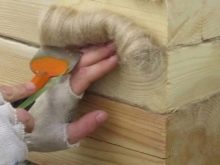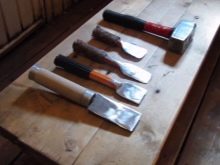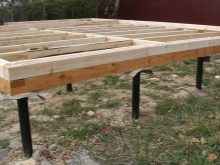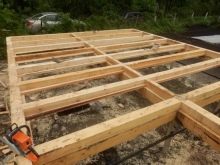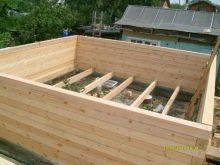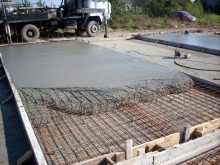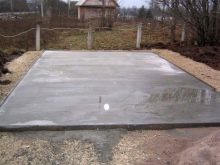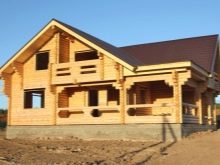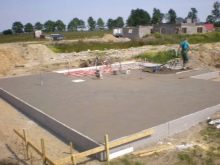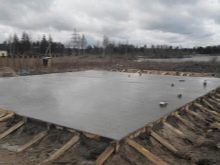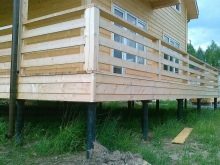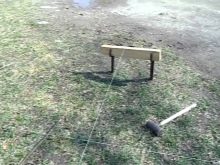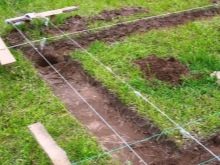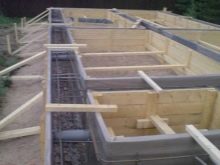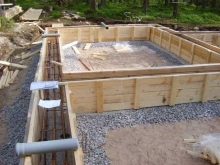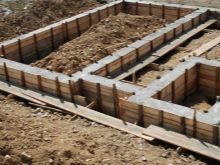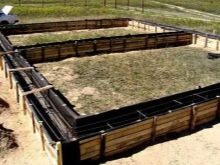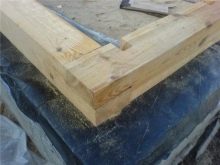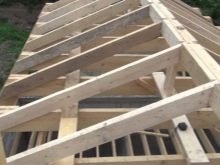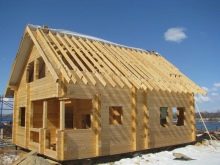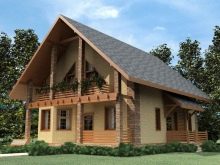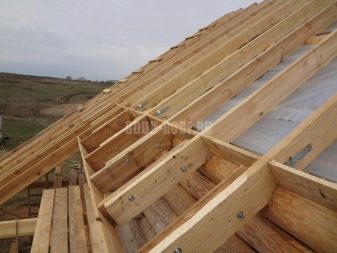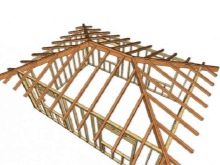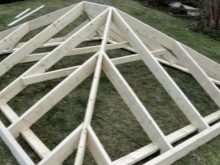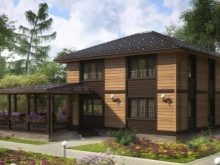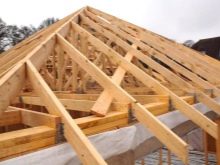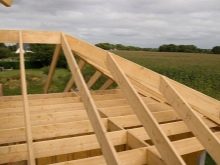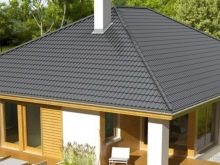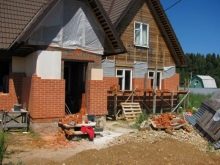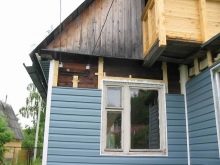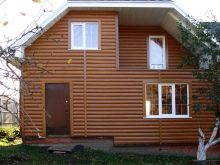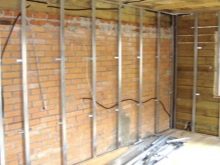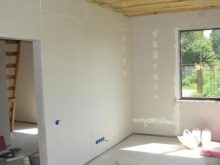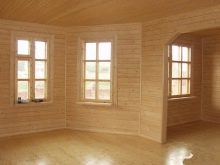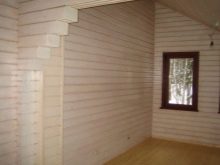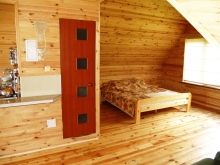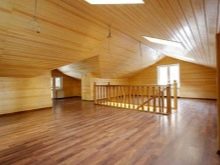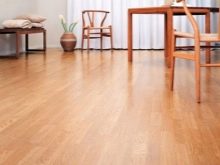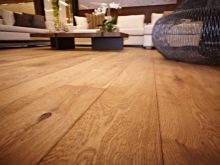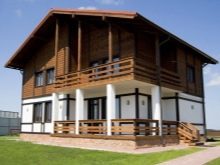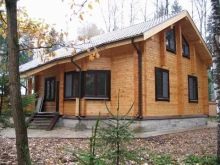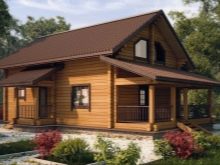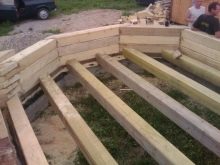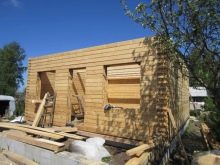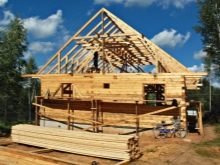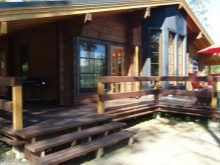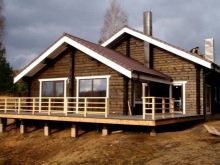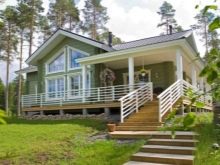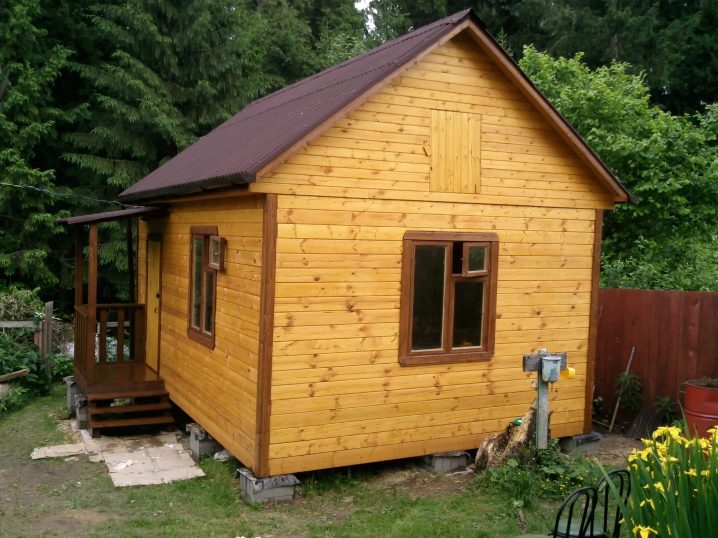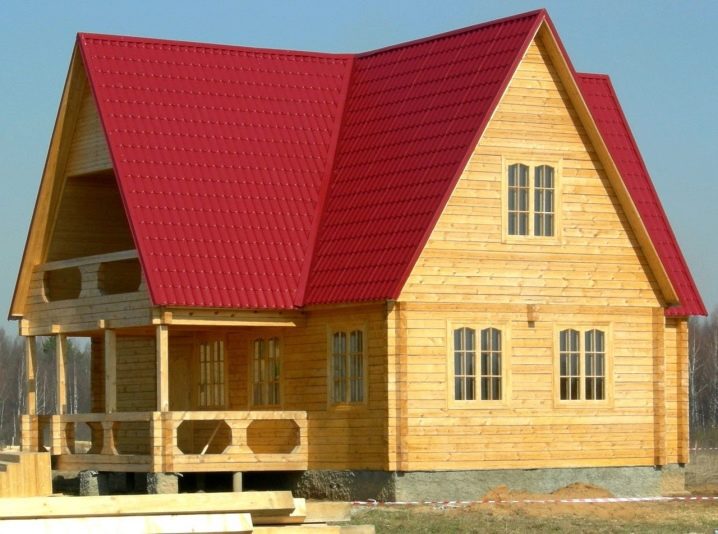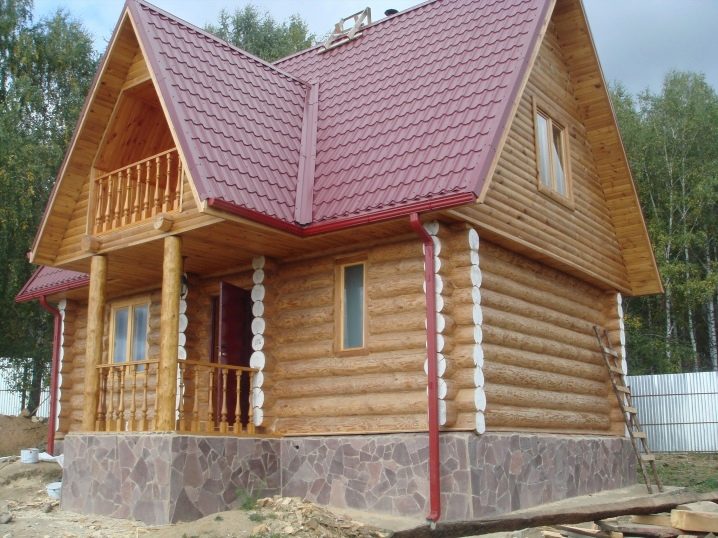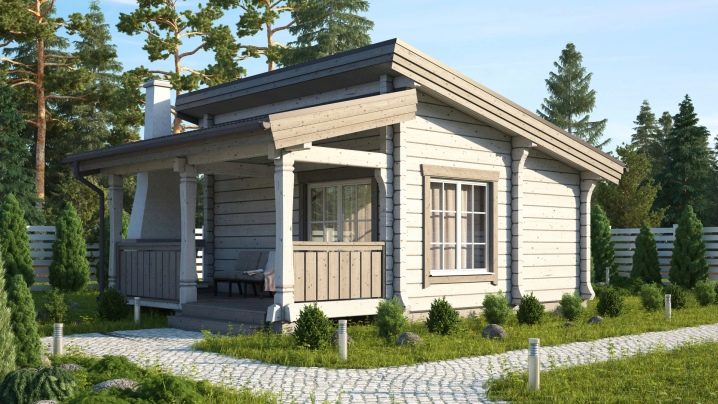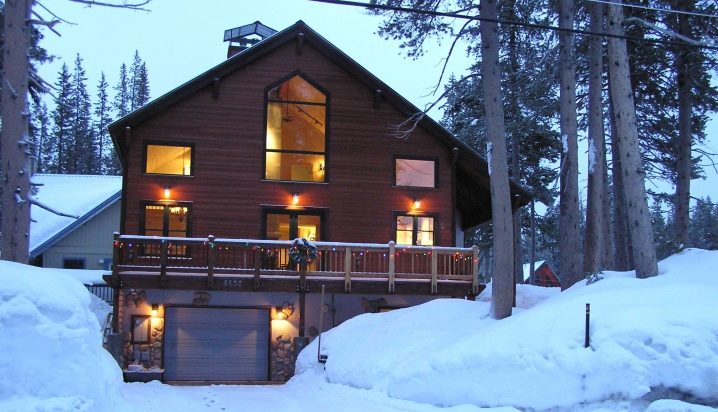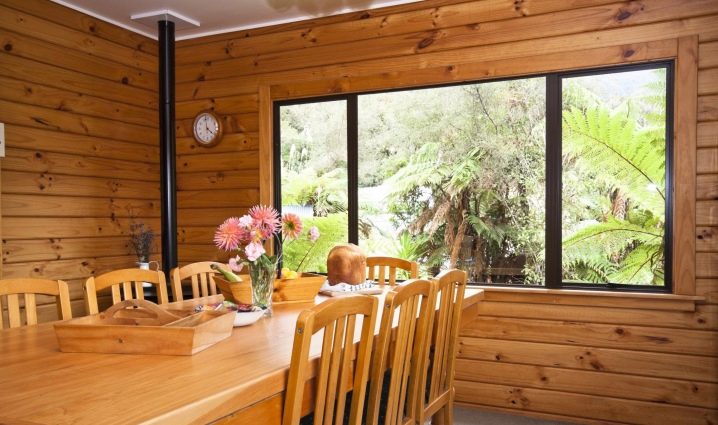The subtleties of building houses from timber
Many people want to spend time in the country from spring to autumn, living in a comfortable beautiful home. Today, everyone has such an opportunity thanks to the technology of building houses from timber.
Special features
Bar-shaped houses are gaining popularity, so it is important to understand why this material is so good. First of all, it is distinguished by its availability and budget price. To build this lightweight material does not require special equipment, and you can cope with it, either alone or with several assistants.
The rectangular cross-sectional shape allows erect even, ready-to-finish walls.
Many are attracted by the spectacular appearance of lumber built to fit perfectly into the rural landscape. From such houses and blows warmth, comfort and tranquility.The beam allows you to arrange the room in any style, but in most cases the owners prefer to admire the natural beauty of wooden surfaces.
The choice is limited only by the material capabilities of the owner. Glued laminated timber consists of several boards interconnected. Constructed from solid timber. The profiled material is obtained as a result of special technical processing, and the non-profiled version requires adjustment during construction.
When choosing a timber it is worth paying attention to the level of humidity, which determines the degree of shrinkage of the future structure. For example, a bar of natural moisture gives 3-5% shrinkage over three years. The dry timber processed in the chamber furnace gives the minimum shrinkage - on the strength of 1-2%. But it also costs more than a timber, which is dried before the start of construction work.
Equally important is the choice of wood. Pine is strong, durable, is relatively inexpensive, and therefore it is considered the undisputed leader in the construction of houses.
The spruce pattern is not interesting, the fir is not very strong, the larch is very heavy, which makes it difficult to process the material.Oak and cedar buildings are beautiful and durable, but the price is too “biting”.
The main disadvantage is the fire hazard of the material, so the wood is carefully treated with refractory means. The timber is subject to rotting, a fungus is formed on it, and mice are gnawing at natural wood and sharpening bugs. Regular treatment with a special antiseptic will help protect it.
When building a country house, it is important to observe the maximum adhesion strength of each individual beam with a side surface.
This can be done in several ways.
- The working surface of the beam at the top and bottom is equipped with grooves and protrusions using a machine cut, which allows to join the side parts of the two beams. Then comes the turn of steel rods or dowels, with which the timber is braced, this allows the walls and ceilings to survive intact and intact until the building is fully fixed.
- The special glue structure turns a bar-shaped wall into the monolithic panel.
Despite the troublesome care, fans of wooden buildings are not getting less.
Project
Often, the owners resort to the services of construction companies in order to purchase a ready-made country house from a timber with a plan drawn up according to a standard design.
On the one hand - no individuality, on the other - this option has a number of advantages.
- A typical project is implemented in 1.5-2 weeks after signing all the necessary documents.
- The visibility of the submitted projects is attractive: each of them was ordered and the new customer has the opportunity to communicate with the owners of a similar structure.
- The cost of a typical draft log cottage is much lower than the individual. Additional savings are achieved thanks to unified design solutions that do not require installation of ornate elements.
The project of the house you can make yourself, depicting all the constituent elements: hall, kitchen, pantry, living room, stairs to the second floor, guest room. The list varies depending on the dimensions of the future design. Then the plan is passed on to the developers who bring the idea to mind. The best option is to make a drawing of your own country residence yourself.
To do this, use 3D-programs to view the house from all sides, and prepare a number of documents:
- make up a drawing of the foundation on which its type, depth and materials used are indicated;
- a detailed scheme of the device of floor beams, on which the floor is installed;
- design all the floors of the house, indicating the location of window openings, partitions and walls, a fireplace and a stove, as well as connecting the house to various communications with precise determination of their dimensions;
- the wall drawing indicates the constituent elements of the walls, as well as their dimensions, cutouts and openings;
- specification of parts of a country house from a bar with an indication of the geometric size of each element is performed using a special program;
- on the plan of the roof depict a multi-layer construction with insulating materials;
- the design of the rafters provides for an indication of the materials from which they are made, as well as the dimensions and elements of fasteners.
When drafting a project, it is worth paying attention to the quality of the timber, since it is on it that the pleasant “weather in the house” depends. For example, beams 18-27.5 cm thick are designed to create exterior and load-bearing walls. For the internal partition suitable timber 9-17 cm thick. In order to save, you can make the inner walls of the frame and sheathed them with wood panels to simulate the timber.
Required tools
Tools need to stock up in advance, ensuring the continuity of construction work. Care must be taken that the tools and fasteners are in place. The best place for them is special cabinets, installed in one of the dachas. Before the tool will take place in the boxes and on the shelves, you need to sort it by type and size.
Large tools need to be placed along the walls or hang it on special hooks. Modern stores offer a wide range for any construction work. Do not buy everything - it is better to make a list and start with the most necessary.
- With a shovel, make excavations in the upper layers of the soil and remove its surplus.
- Tamper compacted soil. You can buy it in the store or do it yourself. To do this, take a bar with a cross section of 15 cm and a length of at least 70 cm and cut off its ends. The trim angle should be straight. Detail clean sandpaper, at the same time rounding the sharp edges.
- The screwdriver set includes a wedge-shaped single or double-sided and cross-shaped tool.
- The clamping of building parts is performed with a steel or wooden vice.
- Passatiazhim role assigned to a tool intended for installation, wiring, as well as for plumbing work. For safety, the pliers are either immediately bought with plastic handles, or, if they are metal, they are wrapped with tape.
- The chisel allows you to work on stone and metal. Hands protected with a rubber pad, worn on the tool.
- The punch allows you to punch holes in the metal sheet and in the concrete wall. It is better to get a set of punches of different diameters.
- Zenzubel or otbornik is a type of planer intended for surface treatment completely.
- A faltsgebel or a plane with a stepped base is used to reprocess niches of any size.
- A tongue groove is sampled. The tongue is equipped with a ruler, which allows you to retreat from the edges of the part and make a groove marking on it.
- The primer consists of a hook-like cutter and a screw attaching the cutter. Serves for a vystugivaniye and cleaning of grooves with a trapezoid section.
- Staple with a semicircular working edge is designed to round the parts.
- Gorbach is a type of planer,combining two removable pads measuring 25 cm in length and 6 cm in width. Suitable for extruding strongly and weakly concave elements.
- A polished steel spatula with a wooden or plastic handle is called a trowel (trowel). It is applied and level the adhesive solution, as well as they carry out plastering work.
- The jointing helps to fill the joints with a solution, and also allows you to give a neat look to the laying of the foundation.
- A pickaxe, if necessary, splits a brick into several pieces.
- Stapler or construction stapler allows you to attach film materials to wooden elements.
- Sharpening bar with fine and coarse-grained surface allows you to sharpen cutting tools in a timely manner.
It is also necessary to have a carpentry tool.
- Two-handed saw, which is a metal plate with teeth on the working edge, used for cutting thick logs. It is no coincidence that it is recognized as the most effective hand saw.
- Hacksaw sawn off and cut out all kinds of parts. Each type of this tool serves specific purposes. For example, a hacksaw with a wide blade and sharpening the teeth at an angle of 45 degrees is used for cross-cutting.A narrow hacksaw is adopted when it becomes necessary to cut sheets of chipboard or thin boards.
- The plane cuts off the unwanted layers of the tree and smoothes its surface.
- Chisels produce chamfers, as well as grind the sharp edges of the parts, giving them a rounded shape.
- The chisel is intended for prodalbany wooden surface.
- With an ax, wood is not only chopped, chopped and hewn. For the construction of a house, at least three types of ax should be used: straight - they chop and chop wood, sharp-angle ones - chop off unnecessary knots, and the stupid angle option is used to trim the wood.
- A wooden mallet differs from a hammer by a smaller impact force, which eliminates damage to parts.
- A mechanical or hand drill with a set of drills is designed to make holes in wooden surfaces for screws and spikes.
In addition to manual, there must be power tools. They are more expensive, but significantly speed up the process of work.
- Electric drill allows you to drill the surface of concrete, stone or brick. A small drill in the shape of a cylinder is designed for drilling small holes, and the corner option drills hard-to-reach areas.
- Fastening screws, screws, screws, dowels and other fasteners is carried out by a screwdriver, with each element is secured with its screwdriver attachment.
- Cutting of large logs and planks, as well as logs and plates, is carried out with a disk electric saw.
It is necessary to stock a tool for measuring and marking.
- Plumb check the correctness of the vertical. This is an indispensable thing in the construction of any types of buildings, as well as installation of windows and doors. It can be done by hand with a strong cord and a small load.
- Measuring tape allows you to determine the linear size of wide surfaces.
- Folding meter convenient to measure miniature elements and parts.
- The use of a wooden or metal square will make sure that all parts of the structure are at an angle of 90 degrees relative to each other.
- The hydraulic level identifies the reciprocity of the location of objects relative to the horizontal plane.
- The construction goniometer measures not only the angles of the structures, but also the angles of the elements relative to the surface.
- The center hole, in the center of which the drill is installed, is marked with a center punch, which greatly increases the accuracy of the work.
- Caliper is a versatile tool.Its main measuring scale is called the rod, and the auxiliary - the nonius. Ease of use makes it preferred for carpenters and joiners.
- Metal cone is convenient to determine the thickness of the concrete solution. A plastic or wooden platform is placed on the prepared concrete; a cone is placed on top of it and pressed with its legs. Then they are filled with three layers of concrete mass 10 cm thick, they take a steel bayonet and pierce each layer with it.
After that, it is necessary to cut off the extra layer of concrete, gradually freeing the concrete mass, and wait until it settles. At the final stage, the cone is placed next to the settled mass, the rail is placed on top of the cone, and then the distance from the rail to the concrete mass is determined with a ruler or tape measure - the greater the distance to concrete, the thinner the solution.
During construction, an electric or hand-held concrete mixer is useful, and any other container will also work, for example, an old trough or a cut iron barrel.
After the construction of the log house you need to dig in, closing up all the gaps. Caulk walls should be using a rubber hammer, tape measure, as well as a few blades, caulks of steel of different sizes.
Flat caulking knob allows you to install a heater in a typed way, when from the entire material one thread is woven using a set of loops. Then the loops are pushed into the cracks between the laid beams.
A quality caulker meets the following requirements:
- the working part of the caulking iron should be made of high quality steel;
- it is convenient to hold a non-smooth rubber or rubber handle in your hand;
- the end of the handle is a cap with a cap;
- The optimum thickness of the blade is 5 mm.
A caulk can be made with your own hands by cutting it out of wood. It is desirable that it was hard wood, otherwise the caulker will become unusable after a couple of meters passed. If the master hits a caulk with a wooden mallet or a rubber hammer, then it is permissible that the blade be completely made of wood. But if he uses an iron hammer, then it is necessary to provide the caulk with a metal handle.
Construction technology
If a detailed project of the house was drawn up with an accurate calculation of all the necessary materials and the planning of the rooms, then it is time to move on to construction work.
The beam weighs relatively little, the erection technology is simple, but it is important to carry it out correctly. The construction process is typical, as for most buildings, it starts with laying the foundation and ends with the arrangement of the roof and wall decoration.
Below is a step-by-step instruction on the construction of log houses.
There are several types of foundations at home that are realistic to build, even if there is no experience in such works.
The technology of creation and features of the monolithic foundation.
- For the monolithic foundation they dig out a ditch corresponding to the dimensions of the future construction. Install a wooden formwork and prepare a solution of concrete, achieving a homogeneous structure of the composition. Rebar is laid in the pit and concrete is poured, drying for 20 days.
- Monolithic foundation is strong and durable. Even if the demolition of the old house is planned, then this foundation can be used for a new construction, having previously strengthened it.
The only disadvantage of the slab foundation is its high cost. It is settled on clayey, peaty, marshy and sandy soils, which are subject to swelling and freezing.This is ideal for unevenly compressing soil.
- A monolithic foundation cannot be built in the event that there is a large elevation difference on the basis of this - this will help avoid the risk of the plate moving and the destruction of the house. If the site has a high level of groundwater, then it is worth choosing sulphate-resistant concrete resistant to aggressive substances for the foundation.
- On a strong ground, first partially replace the soil with gravel or gravel, and then proceed to the construction of the foundation. The arrangement of the monolithic foundation on the rocky ground is real, but this kind of soil in itself is a stable base.
Next on the list is the pile foundation.
- Along the perimeter of the future house they dig pits at a distance of one and a half meters from each other. Gravel, crushed stone or sand are poured into the pits, and then wooden or metal piles are driven in (screw versions are screwed in). They are buried in the ground not less than one and a half meters, waterproofed with roofing material or plastic film, and then poured with concrete.
- The base gains strength after about 30 days. After that, the lower trim is made of wood or metal pipes, and only then a framework is constructed and the walls of the future dwelling are mounted.
- The pile foundation is universal - it is suitable for any soil.And still it is necessary to give preference to metallic material, which neither the high humidity nor the proximity of groundwater can do with.
The most popular today is a strip foundation, which is a cross between a monolithic and a pile foundation.
- To install it mark the area around the perimeter of the house and indicate the location of the load-bearing walls. Dug trenches should be about 10 cm wider than the walls and not less than 600 cm deep. The trenches are covered with sand and rubble (the total thickness of the layer will be 20 cm) and then poured with a 5 cm layer of concrete.
- The formwork is made of a board 2.5 cm wide and set in such a way that it protrudes approximately 400 cm above the ground. Then proceed to the laying of the reinforcing layer: metal rods are laid along and across, and the joints are fastened with strong wire. The rods, the diameter of which must be at least 1 cm, are laid in two layers.
- The ratio of sand and cement in the concrete solution should be 1: 3. The prepared solution is poured into trenches. To avoid bubbles, it is necessary to sprinkle uncured concrete with water.A few weeks later, the foundation will be solid and will allow you to proceed to the next phase of construction.
- Shallow-foot foundations are built on stony or crushed-stone soils, as well as with a low level of groundwater. Buried foundation is built on sandy and clayey soils - it is suitable for sandy loam and loam, as well as for rocky soil.
- The construction of any kind of foundation is unacceptable with a high level of groundwater and a strong drop in the height of the site. It is inappropriate to build it in wetlands or in regions where the ground freezes through more than two meters.
When the foundation hardens, it is coated with molten bitumen and a layer of roofing material is laid, providing waterproofing. At the same time, the roofing material should be 300 cm wider than the foundation itself.
Then build the first crown. The wood is impregnated with antiseptic solutions, and the first row of a timber is laid in a half-wood method - in this case, the upper part is sawn off in one timber, and the lower part in the other.
The design of the lower crown requires careful adjustment of the timber. Pre-assembled pins of wood to connect the timber rows with pre-made holes. The walls are laid out strictly horizontally, connecting them with dowels.Insulation is laid between the rows, and the vertical of the wall is calibrated using a building level. Great strength provides the use of special spikes.
The roof of the house, as an important part of it, is designed in advance.
For example, a shed roof is an overlap, made a single slope, which saves money and saves nerves. Such a roof has a small slope in the complete absence of the mansard wall. Arrangement of the attic space is impossible, and the house itself with such a roof often looks primitive, so many owners choose more complex options.
For example, a gable or gable roof is popular everywhere.
For ceilings and beams, you should choose a timber section of 15x20 cm and fix it in increments of one meter - this will make the attic a residential area. Then you can begin to arrange the frame of the future roof.
The rafters, which are the basis of the roof at an angle of 35 degrees, are attached to the mauerlat, a thick support beam placed along the perimeter of the building.
To increase the strength of the frame, you need to use a strut and rack. After installation, the roof frame is covered with high-quality vapor insulation and proceed to the installation of the batten.
For the batten board chosen 150 mm wide and 15-20 mm thick. The distance between them depends on the roofing material. For tile boards nailed abutly, making a continuous crate.
If you plan to cover the roof with slate or corrugated flooring, you must fix the boards in 300 cm increments. The possibility of using any roofing material is an undeniable plus of a gable roof.
The four-pitched hip roof is durable, resistant to strong winds, beautiful, reliable and durable. It is not so easy to make it, and to design such a roof is an expensive pleasure, therefore it has few fans.
To perform this design, you need to follow some recommendations.
Along the perimeter of the bearing walls on the waterproofing layer is placed and fixed the mauerlat, on which the fixings of future parts of the roof are marked. It is important that the markings on both sides coincide, otherwise there is a risk of unevenly laying all parts of the structure, including floor beams, which are mounted either on the walls or just below the walls - on a fixed beam.After that, the mauerlat is fastened with tie-downs and the overlappings are closed with a planking floor in order to ensure the safety of work.
On the puffs and floor beams install rack, fastened on top of the ridge beam. To it also attach the truss central legs from the end of the hip sides of the roof. After that mount intermediate rafters from the frontal slope of the roof.
Then proceed to the arrangement of the diagonal rafters connecting the corners of the building with the ridge. Work on the frame is completed with the installation of ladders or short rafters. If necessary, the roof structure can be strengthened with a strut, sprengel or by installing wind beams. The length of the rafters can be increased with the help of "fillies" - pieces of boards that form a roof cut.
The installation of the roof is similar to the gable variant, only between the crate boards a heat insulator is laid, on top of which a counter grill is placed. Depending on the roofing material, it is either immediately screwed to the counter grill, like a metal tile, or sheets of plywood or OSB (under a soft roof) are laid under it.
After that, you can proceed to the finishing work.It is important to consider the following: a house built from a chamber drying bar allows you to go straight to the finish. If the building is constructed from another material, you will have to wait at least six months until it shrinks.
Modern stores offer a wide choice for interior and exterior decorating, but it is better to describe the most popular options.
Brick cladding allows you to apply several variations of the position of this material, giving a unique style to the whole structure. The original solution for door and window openings, as well as for the design of eaves will be the use of rounded bricks. This material will not only improve heat-saving properties, but also reduce the risk of fire at home. The disadvantage of brick cladding is its high cost.
Siding is a finishing panel of PVC one millimeter thick. Vinyl siding protects the home from the negative effects of the environment, is UV resistant and easy to maintain. PVC front panels imitate a brick, marble or granite surface, and are resistant to chemicals and mechanical stress.
For interior walls, the use of flexible and pliable plasterboard sheets is permissible. Before covering, lumber walls should be cut and treated with protective agents, and then fixed on the base. However, experts recommend attaching sheets of plasterboard on a wooden crate, allowing you to lay a layer of insulation.
To do this, follow a series of sequential actions:
- mount the crate starting from the corners, attaching the slats at a distance of 40-50 cm on the walls and on the ceiling;
- lay any insulation;
- sheets of drywall attach no less than nine screws;
- plaster and grind seams;
- proceed to the final decoration - painting or wallpapering.
Finishing clapboard - an interesting option, just before using it is necessary to process it with protective refractory agents. If the house is built of laminated veneer lumber, then its walls are beautiful in themselves - it is enough to polish them and process them with a primer. For a natural finish, you can apply a false timber imitating a wooden surface.
Below are several options for finishing the floor.
- Varnishing protects the surface from damage and gives it an aesthetic look.Before applying the varnish, the floor is washed with soapy water, primed, and then water-based varnish is applied.
- Linoleum, laminate or carpet covering is allowed on the floor of a village house.
- Panels and sheets of polymeric materials will reduce humidity, improve thermal insulation and shorten the time of finishing works.
Tips and tricks
Building a log house is not easy, there are a lot of nuances here that you can figure out using the advice of experts.
If it is necessary to make the dacha a place of summer and winter recreation, then it is better to choose a material whose thickness corresponds to the weather conditions of the region of residence. For warm southern winters a thin timber is suitable, the thickness of which does not exceed 100 mm.
Cold winters of temperate climate require the thickness of the timber from one centimeter. A bar with a thickness of 200 mm will protect against severe frosts. You should not save on thermal insulation materials - stay in the house will be comfortable at any time of the year.
If there is no experience in construction, then you can use ready-made kits of factory production for self-assembly. They contain everything you need for construction, including drawings and a map of the log house assembly.At the order of a set the drawing of the base which is most suitable to climatic conditions of the region is provided.
When building a log house is important to observe the phasing of work.
At the first stage, the foundation is poured and a log house is built, rafters are installed and the roof is mounted. On the second - install windows and doors, waiting for shrinkage at home. Two stages can be combined by making cuts above the door and window openings of 4 cm in size - the house will shrink by about this height.
If you need to make a veranda, shed or any other extension to the house, then you need to do it on a pile foundation, the design of which does not need to be connected with the existing one.
To change the design of the house, you must certify the project and get permission.
Beautiful examples
A small house with a gable roof is a great solution for summer residents who come to the site in the warm season. This option is the best solution for owners of small areas.
The spacious house with a metal roof will accommodate both households and guests. In bad weather, you can hide behind wooden walls, and a wide terrace has to sit-back and have friendly conversations.
The compact two-story building looks cozy and fits well into the rural landscape. It is an excellent option for the plot of small and medium sizes.
Spacious light house with a gambrel roof resembles a clean Ukrainian hut. The "highlight" of the house were lively vines that set off the attic.
A bar-shaped house with a lean-to roof is a pleasant home with a wide terrace. The small size and inconspicuous color are organically combined with the surrounding greenery. The budget version of the building is designed for a comfortable rest in the summer cottage.
A snow-covered building with luminous windows resembles the best of good tales. Inside such a structure is warm and cozy, and outside there is a beautiful winter raging, for which it is so pleasant to watch from the wide terrace.
From the spacious clapboard-lined kitchen it breathes homely warmth. The unity of style is emphasized by pieces of furniture, dishes, and wooden window frames. This is a great place to gather for breakfast with the whole family and discuss plans for the coming day.
Errors in the construction of a house from a bar are shown in the following video.
